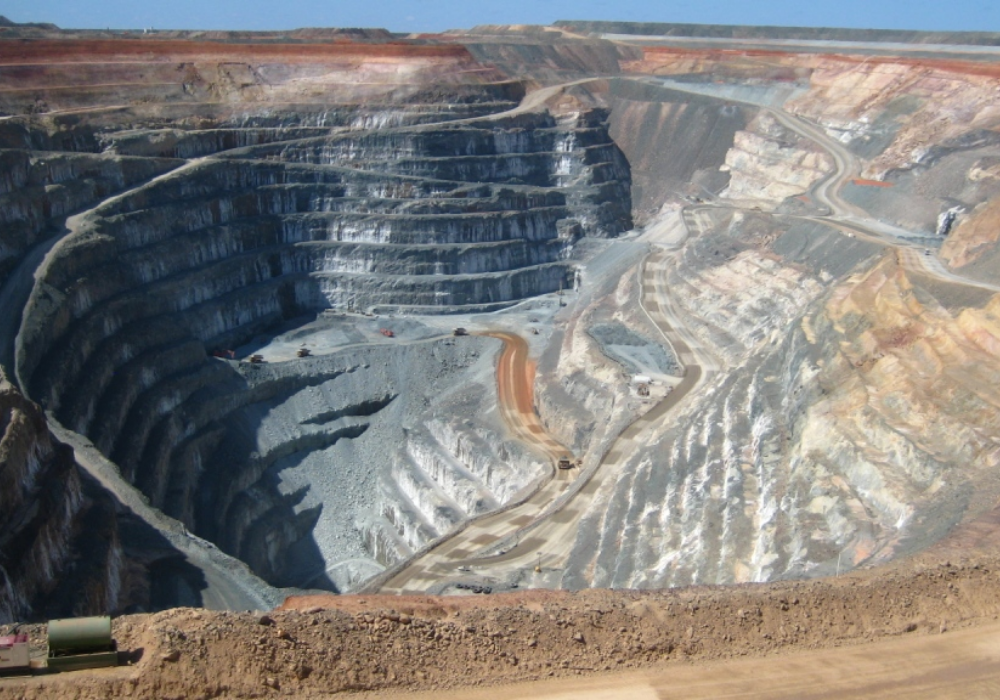Gold production fell by 5.2% in 2020 after a number of the industry's biggest companies were affected by the pandemic

GlobalData projects production from the largest gold mining companies to recover and reach somewhere between 25-25.75 million ounces in 2021 (Credit: Wikimedia Commons/Calistemon)
Global gold production is set to bounce back in 2021 after the coronavirus pandemic caused a drastic drop in output last year, says an analyst.
The crisis led to lockdowns being imposed across key gold-producing regions all over the world in 2020, with companies being forced to close their mining operations and suspend any expansion works.
According to data and analytics firm GlobalData, gold production fell by 5.2% to 108 million ounces (Moz) last year. But it expects output to increase by 5.5% in 2021 to 113.9 Moz and grow to 124.1 Moz by 2024 – marking a 2.9% compound annual growth rate.
GlobalData anticipates Canada, Indonesia, Peru and the US will be the “key contributors” to this growth, with the combined production in these countries expected to recover from an estimated 20.1 Moz in 2021 to 25.3 Moz in 2024.
GlobalData associate project manager Vinneth Bajaj said: “Key projects expected to commence operations during the forecast period include the Turquoise Ridge underground expansion project in the US, which is currently undergoing construction. With an annual gold production capacity of 500,000 ounces, the project is expected to be commissioned in late-2022.
“The Salares Norte project in Chile, which is wholly owned by Gold Fields, is currently under construction. With an annual gold production capacity of 450,000 ounces and a development capital expenditure of about $860m, the project is expected to commence operations in 2023.”
Global gold production affected by drop in output from industry’s largest firms
According to GlobalData, the biggest impact of COVID-19 on gold production came in the first half of 2020, when six of the top 10 gold producers reported a collective 8.4% year-on-year fall in their output.
Major declines were experienced by Barrick (12.3%), Newcrest (15%) and Agnico Eagle (8.4%). The biggest contributors offsetting the declines were Kirkland Gold (48%), due to the acquisition of the Detour Lake project by Detour Gold in January 2020, and Zijin (5.9%).
Several gold mines were forced to suspend operations temporarily due to the pandemic, including Barrick’s Veladero, Pueblo Viejo and Porgera mines and Agnico’s Nunavut, Quebec and Mexican mining operations.

China, after reporting an all-time high of 16.7 Moz of gold production in 2014, has been on a downtrend ever since, as a consequence of policy changes and depleting ore reserves, according to GlobalData.
On top of this, the pandemic hit the country’s output hard during the first quarter of 2020, with the analytics firm now projecting China’s gold production to have declined by 7% to 12.4 Moz last year.
In the second quarter, the pandemic also had a significant impact on African operations, where gold production is gradually shifting its base towards the West African nations.
Gold mines that were temporarily suspended in Africa include Mponeng, Kalgold and Zondereinde in South Africa, Obuasi in Ghana, Hounde in Burkina Faso and Fekola in Mali.
Overall, GlobalData said gold production from South Africa is expected to have fallen by 10.9% in 2020, with declines in Guyana (15.9%), Ghana (7.5%) and Mali (5.6%).
In Indonesia, it anticipates production to have declined by 28.9%, which is largely down to the transition of the Grasberg open-pit mine – the country’s largest gold-producing site.
Unlike other key producers, Australian gold miners remained largely unaffected by the outbreak, as stringent measures were adopted by the government to contain the outbreak enabling minimal disruptions to mining activities.
Bajaj said: “State governments, including Western Australia, South Australia, Tasmania and the Northern Territory, began to close their borders from late March, with certain exceptions for essential service workers. Overall, gold production in Australia is expected to have grown by 4.3% in 2020, reaching 12 Moz.”
